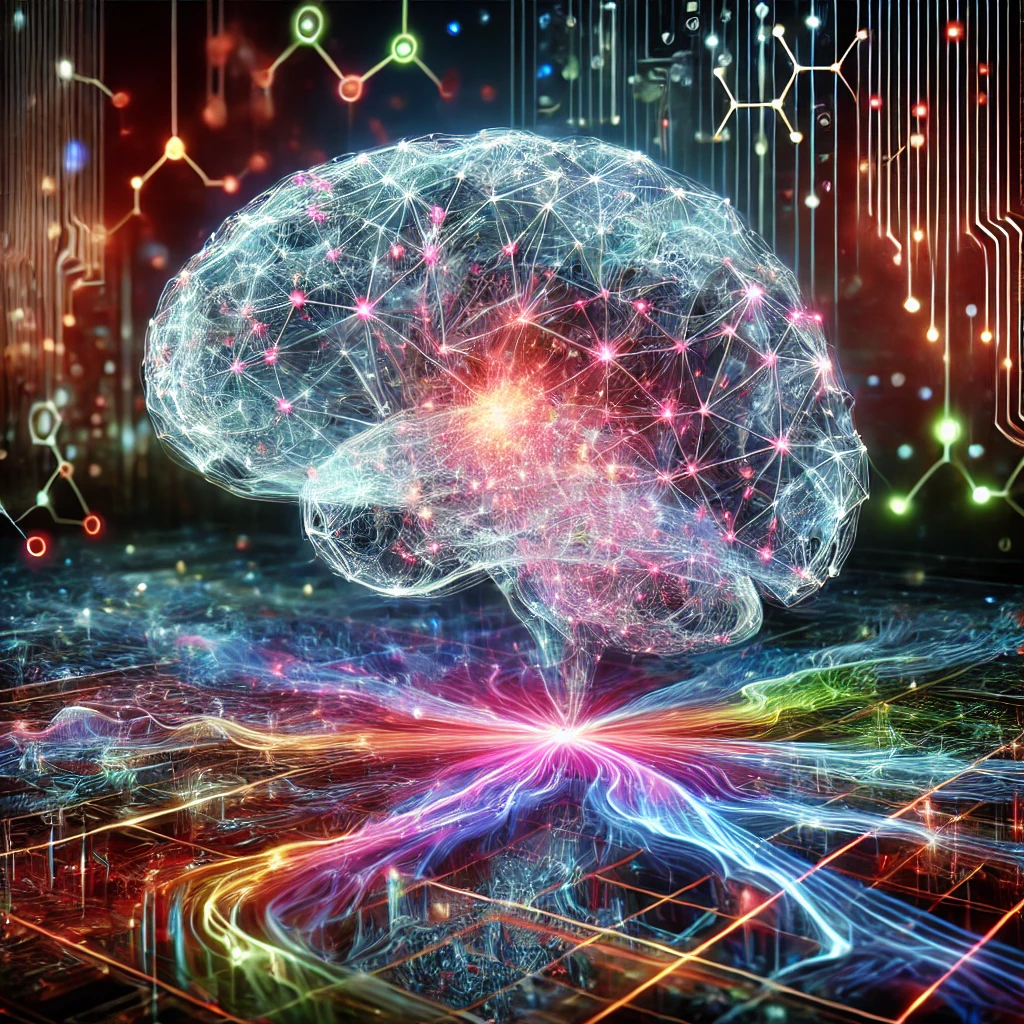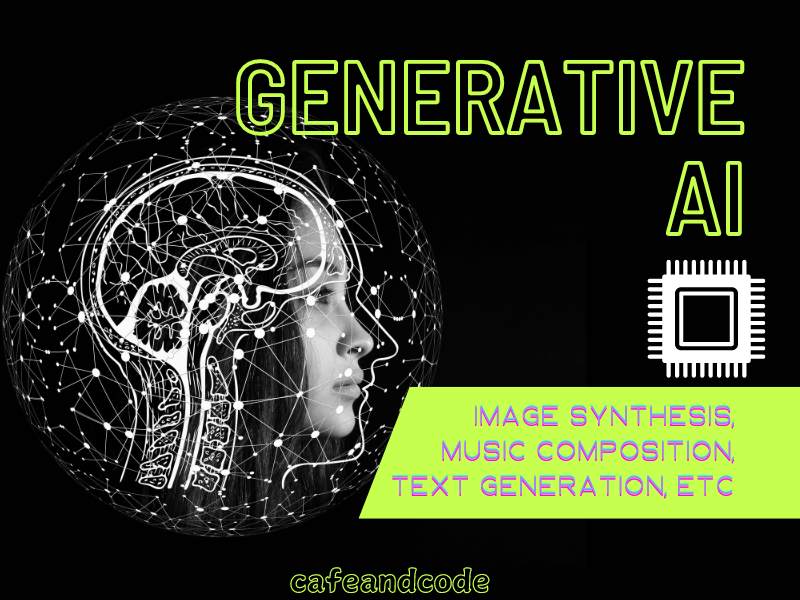Table of Contents
Introduction
What is Generative AI?
The term “Generative AI” describes programs that create new content—like literature, graphics, music, or designs—from already existing information by utilizing machine learning models. These models can produce outputs that replicate or expand upon what they have learned by using vast datasets to identify patterns and structures.
Brief History and Evolution of Generative AI
Early neural network models served as the foundation for generative artificial intelligence, Ian Goodfellow’s Generative Adversarial Networks (GANs) really took off in 2014. Since then, developments like large-scale language models (like GPT) and variational autoencoders (VAEs) have increased its capabilities in a variety of fields, including natural language processing and the arts.
The Importance of Generative AI in Today’s Technological Landscape
Industries are changing as a result of generative artificial intelligence ability to enable automated content generation, boost creativity, and promote innovation. It is essential to industries like marketing, healthcare, and entertainment since it allows companies and artists to speed up processes, come up with fresh ideas, and provide customized experiences.
How Generative AI Works
Understanding Neural Networks and Deep Learning
Based on layers of connected nodes (neurons), neural networks are computational models that mimic(copy) the structure and functions of the human brain. In order to extract complex patterns from massive datasets, deep learning—a subset of machine learning—uses numerous layers of these networks. It uses these patterns to generate new material.
The Role of Machine Learning in Generative Models
Machine learning is used by generative models to evaluate and learn from preexisting data. With the help of the learnt features, they fill in the blanks and create new data, enabling them to generate realistic outputs like text, sounds, and images.
Types of Generative Models
- GANs (Generative Adversarial Networks): Consist of two networks, a generator that creates content and a discriminator that evaluates its authenticity. They compete, improving the quality of the generated output.
- VAEs (Variational Autoencoders): Compress data into a latent space, then decode it to generate new data with similar properties to the input.
- Transformers: These models, like GPT, are used for sequential data generation, especially in natural language processing. They work by predicting the next element in a sequence based on prior data.
Key Algorithms and Techniques in Generative AI
- Backpropagation: A training method that adjusts network weights by minimizing errors.
- Latent Space Representation: A technique where data is mapped into a lower-dimensional space, allowing models to generate variations.
- Reinforcement Learning: Used in generative models to reward improvements in generated content, refining output quality over time.

Applications of Generative Artificial Intelligence
Art and Design
Artificial intelligence (AI) is transforming the creative process by creating digital art, sculptures, and paintings. By pushing the bounds of creativity and combining AI innovation with human creativity, artists utilize models to create original artworks based on data that already exists.
Music Composition
AI creates new melodies, fresh songs and arrangements by examining trends in previously written pieces. This includes helping composers, making customized soundtracks, and allowing people who aren’t musicians to make their own music, all of which are having an effect on the music industry.
Text Generation
Virtual assistants, chatbots, and content production all frequently use language models like GPT. For jobs like producing articles, answering questions, and automating conversation, they produce text that is similar to that of a human, increasing efficiency in content-driven companies.
Healthcare
Generative artificial intelligence (AI) in healthcare generates medical pictures (such as CT or MRI scans) to better diagnosis, generates molecular structures that help in drug or medicine discovery, and mimics(copies) medical conditions to increase treatment outcomes.
Entertainment
By creating video game worlds, creating characters, and even helping with film and animation, artificial intelligence is transforming the entertainment industry. It speeds up the creation of content, allowing for more dynamic and customized media and game experiences.
Ethical Considerations of Generative AI
Authorship and Creativity
Who owns content created by AI—the AI itself, the creator, or the user—is a crucial issue of ethics. Debates over creativity, ownership, and the place of human involvement in AI-driven works are brought up by this, particularly when the creativity of AI-generated content approaches that of human creators.
Misinformation and Deepfakes
Hyper-realistic deepfakes produced by generative artificial intelligence have the potential to spread false information, manipulate the media, or harm people’s reputations. Because of the significant ethical issues involved, it is important to create strategies to prevent misuse.
Copyright Issues and Legal Implications
AI-generated content might violate already published works, creating issues in copyright laws. Legal frameworks pertaining to intellectual property ownership, licensing, and protection must change as AI produces more creative works.
Bias and Fairness
Particularly when generating text or images, generative AI may provide unfair or biased results due to biases inherited from training data. To employ AI systems with ethical integrity, it is important to make sure they are unbiased, fair, and transparent.
Challenges in Generative AI Development
Data Privacy and Security Concerns
Generative AI depends on huge databases, many of which contain private data. Particularly in sectors like healthcare and finance, maintaining data security and protecting privacy are major concerns.
Computational Requirements and Energy Consumption
Generative models require a great deal of computational power and energy to train, especially deep learning models. Because of the potential effects on the environment and the distribution of resources, efficiency and sustainability become crucial objectives.
Handling Diversity and Unpredictability in Generated Outputs
The results generated by generative artificial intelligence can be unpredictable or biased, particularly when working with a variety of data sets. Maintaining accuracy, representation, and consistency across many use cases is an ongoing problem.
Ensuring Human Oversight and Control
Human monitoring is necessary to ensure ethical standards are maintained and to prevent misuse of AI-generated content. It’s crucial to preserve human oversight and control throughout the development and implementation of generative AI in order to prevent negative or unexpected results.
Future of Generative AI
Next-Gen Models and Advancements
It is expected that generative artificial intelligence models in the future will be more powerful, effective, and able to produce ever more detailed and broad results. Algorithmic advancements like better Transformers, VAEs, and GANs will open up new possibilities and applications.
AI-Human Collaboration in Creativity
In its capacity as a cooperative tool, generative AI holds the potential for enhancing human creativity. AI can be used by designers, artists, and creators to develop ideas, accelerate workflows, and explore creative possibilities beyond conventional ways.
Expanding Industries Influenced by Generative AI
New industries like architecture, where generative AI can design buildings, and finance, where it can model market predictions, will continue to be impacted by this technology. The ability to apply it to numerous industries will grow due to its capacity to improve and automate creative processes.
The Rise of Autonomous Creativity
The question of whether AI can replace human artists emerges as generative AI increases. Even though AI is capable of producing amazing material, it lacks subjectivity, intent, and human feeling. AI-generated content and human creative control will probably coexist in the future in a balanced way, with AI serving as a tool rather than as a substitute for human creativity.
Frequently Asked Questions(FAQ’s)
1. What is Generative AI?
Generative AI uses machine learning models to create new content, such as images, text, music, or videos, by learning from existing data.
2. How does Generative AI work?
It leverages deep learning algorithms like GANs, VAEs, and Transformers to generate content by identifying patterns in data and producing new, similar outputs.
3. What are common applications of Generative AI?
Applications include AI-generated art, music, text (like chatbots and content creation), medical images, video game design, and more.
4. What are the ethical concerns with Generative AI?
Key concerns include issues around authorship, deepfakes, misinformation, copyright violations, and biased outputs.
5. Can Generative AI replace human creativity?
While it enhances creativity, AI lacks human emotion and originality. It’s more likely to be a tool for creators rather than a replacement.

